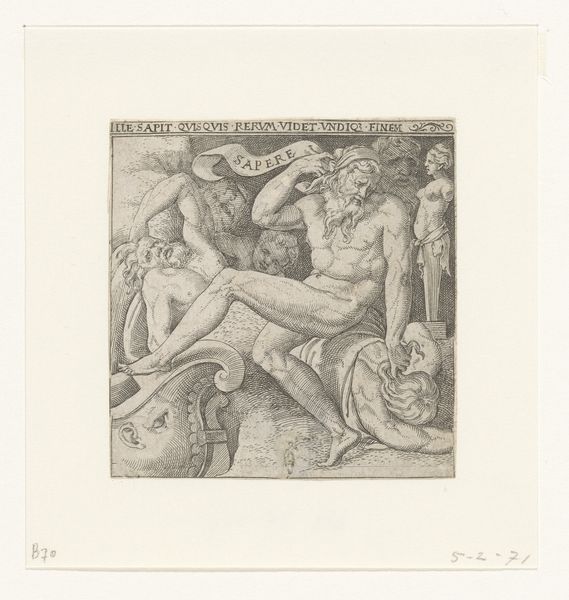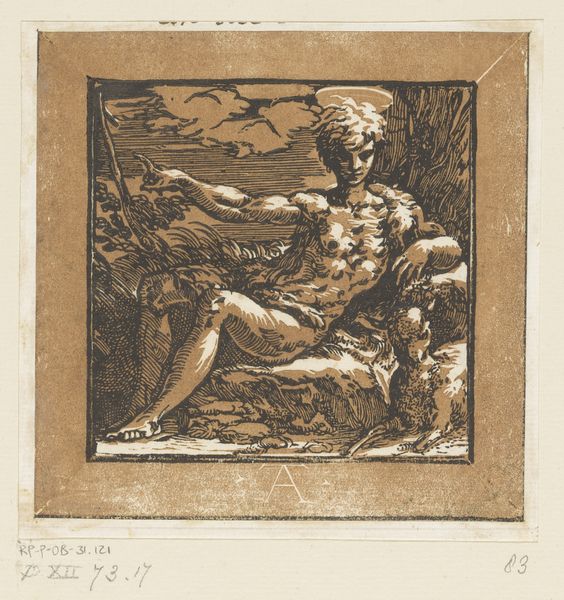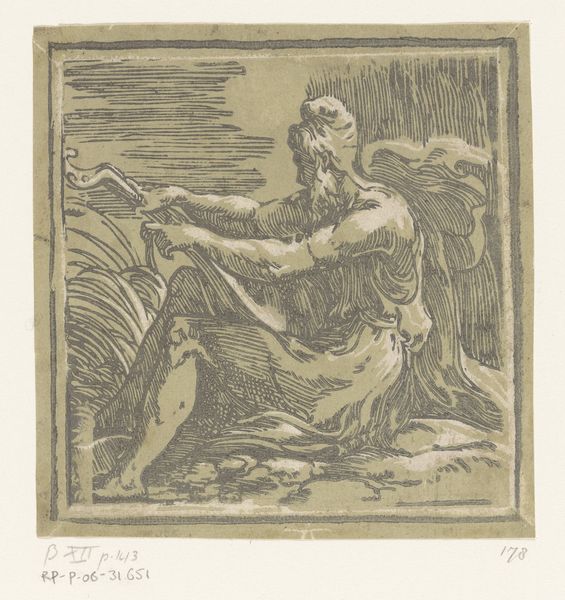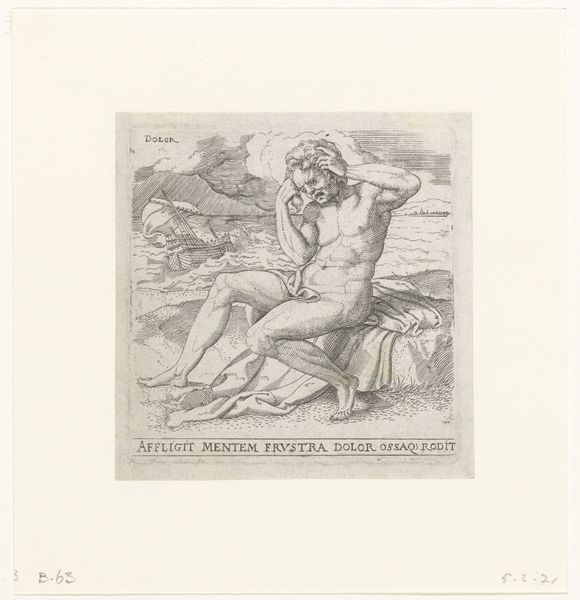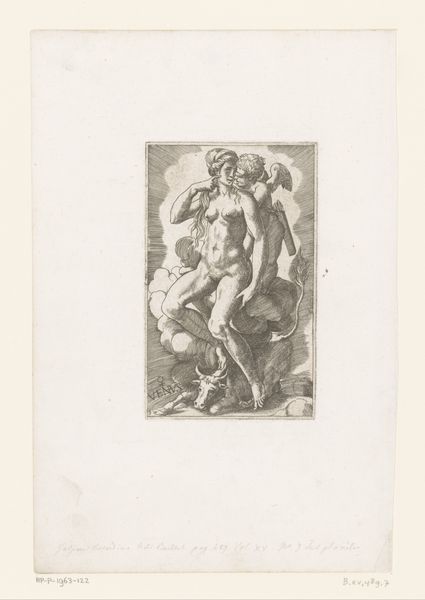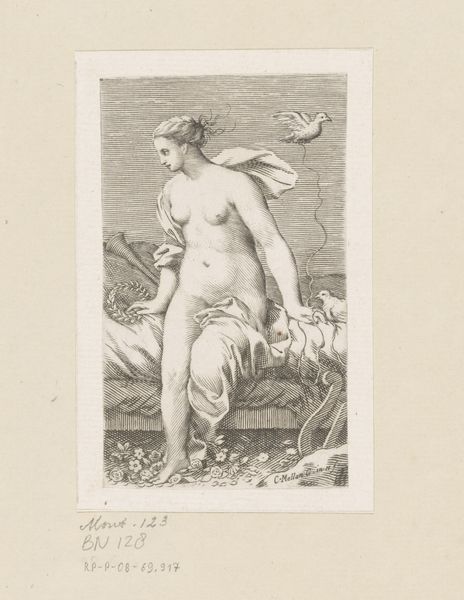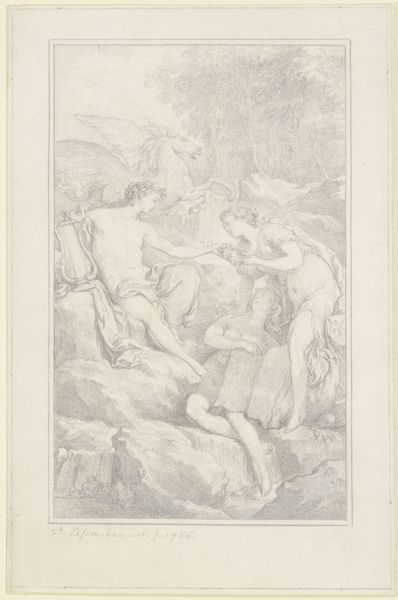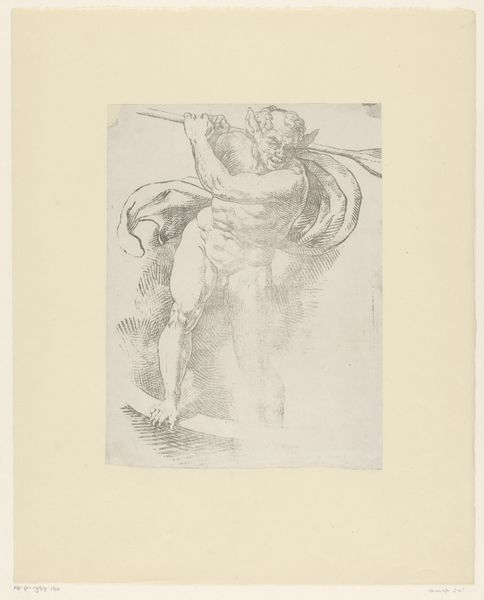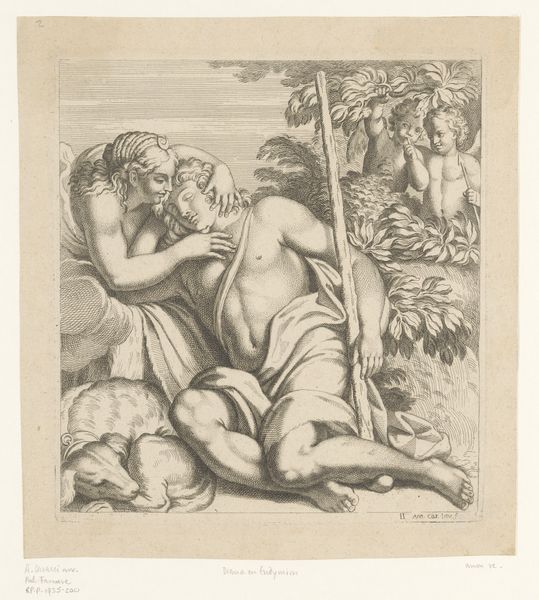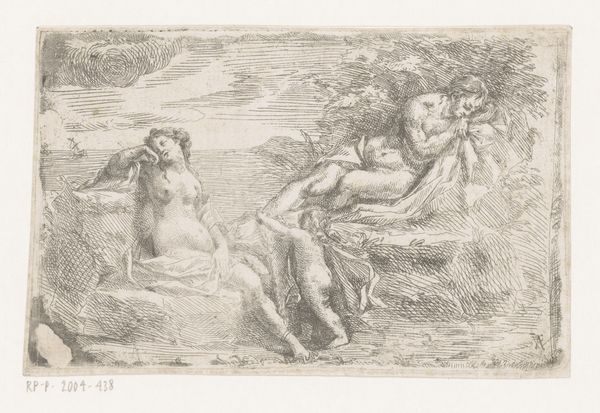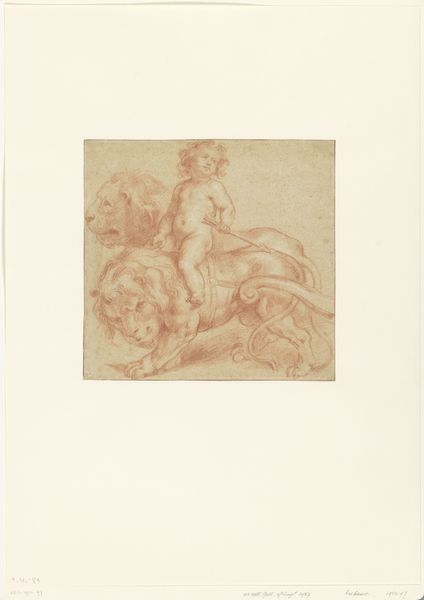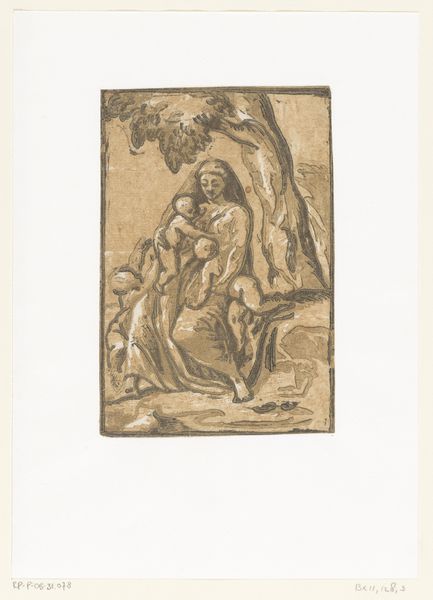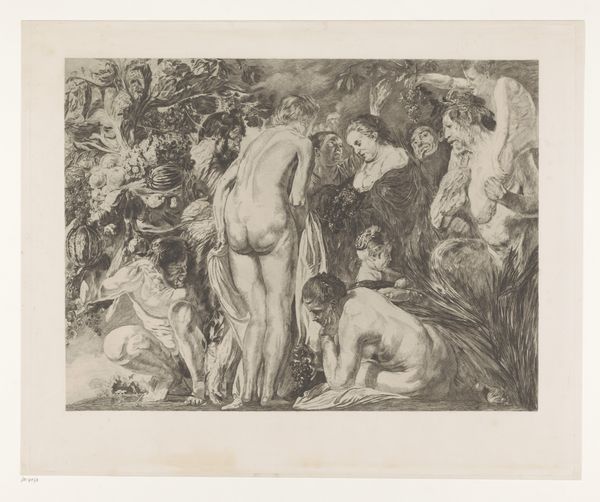
#
pencil drawn
#
light pencil work
#
ink paper printed
#
parchment
#
pencil sketch
#
old engraving style
#
etching
#
ink drawing experimentation
#
pen-ink sketch
#
pencil work
Dimensions: height 79 mm, width 78 mm
Copyright: Rijks Museum: Open Domain
Curator: Let's turn our attention to "Smart," an ink on paper print, etched sometime between 1533 and 1567, and attributed to Enea Vico, now held here at the Rijksmuseum. What are your first impressions? Editor: Well, immediate mood: stormy seas, both outside and within. The central figure looks tormented, hands clasped to his head, as if trying to contain the chaos around him. It feels like a physical manifestation of inner turmoil. Curator: Precisely. Note the careful rendering of the figure's musculature, almost idealized, contrasting sharply with the anguish etched on his face. The linear precision and density of the hatching define the light and shadow, creating a dramatic visual effect. Editor: The ship struggling against the waves in the background mirrors that tension, doesn’t it? It's not just a backdrop; it amplifies the man’s internal state. It makes you wonder about the narrative implied – what loss, what shipwreck, literal or metaphorical, has driven him to this? Curator: It could be interpreted in several ways. The Latin inscription, “AFFLIGIT MENTEM FRVSTRA DOLOR OSSA Q(UE) RODIT," meaning, “Pain afflicts the mind in vain, and gnaws at the bones" further contextualizes his state. Is the print referencing a specific classical myth, or is Vico offering a broader comment on human suffering? Editor: I love the open-endedness of it. It makes it relatable, doesn’t it? That visceral depiction of despair, even rendered in the precise lines of the engraving, transcends its historical context. I get lost in the parallel lines on the body and how its similar to water in a boat sinking... maybe a call to faith or hope when everything feels in complete upheaval and ruin. Curator: A powerful testament to the enduring capacity of art to explore universal human emotions through sophisticated formal means. The textures, light and forms are an amazing example for the historical era. Editor: Yes. Seeing the meticulous detail applied to such raw emotion is strangely comforting. It reminds us that even in our darkest moments, there is still beauty to be found, or even made.
Comments
No comments
Be the first to comment and join the conversation on the ultimate creative platform.
